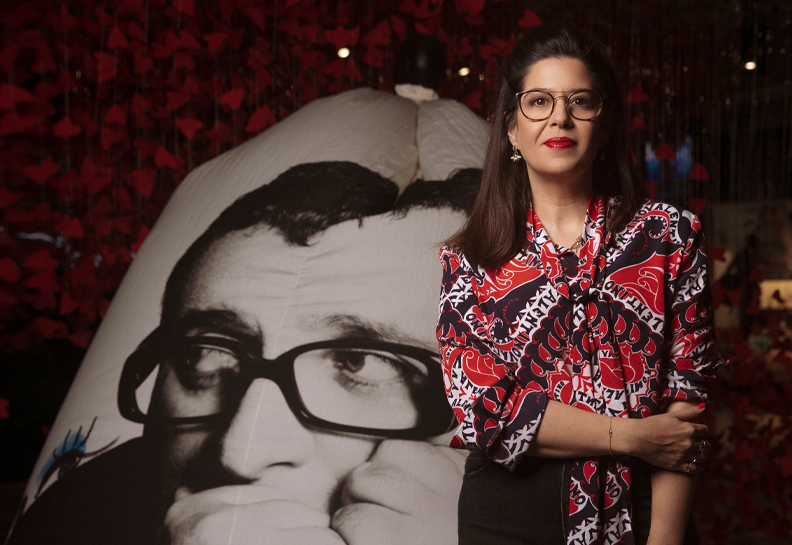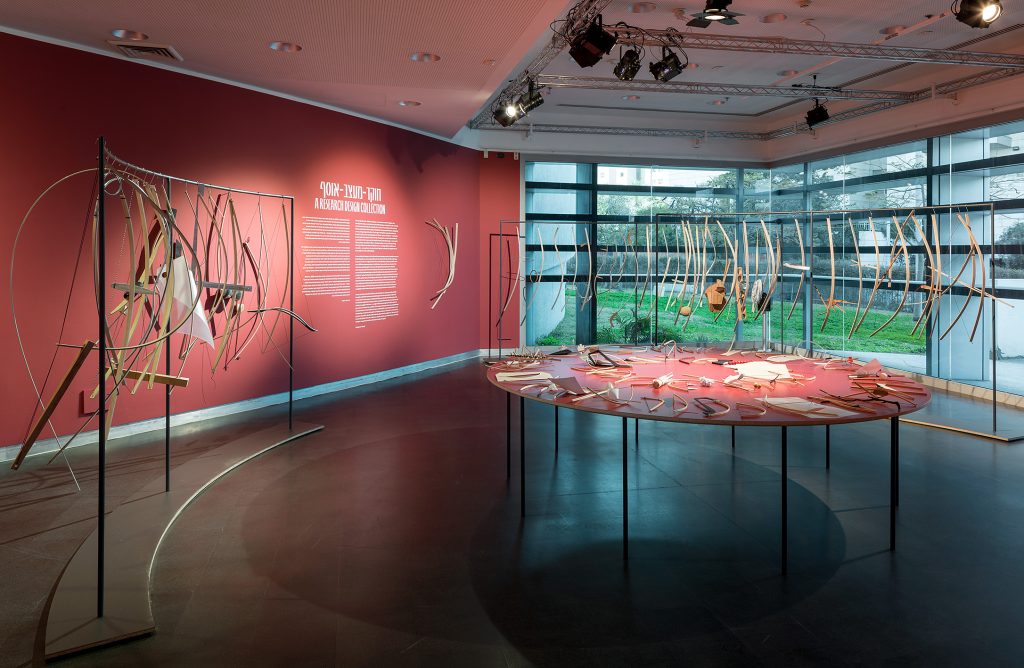When we think about a city and bicycles, we think of Amsterdam or Copenhagen whose bicycle culture evokes admiration. The Danish capital Copenhagen has not only created conditions and infrastructures for urban bicycle culture from which we can all learn, its residents, whether consciously or not, have created a new dialogue between bicycles, fashion, and style that is greatly influencing the emergence of a new urban bicycle culture all over the world.
If you go into Google and search for the word combination ‘bicycle’, ‘style’, and ‘chic’, innumerable websites, articles, and blogs on the subject will come up. If you search the internet, you’ll find fashion brands that market bicycles under their label, fashion advertisements that incorporate bicycles in their models’ styling, boutique stores for fashionable bicycle accessories that offer designed companion products and accessories to dress your bicycle in style, blogs covering bicycle street fashion, and so forth. Engagement with fashion and bicycles does not only occur on the margins of the web and in alternative environments, it also appears in the headlines of websites, newspapers, and fashion magazines. Gossip columns publish paparazzi photographs of celebrities running errands on ‘cool’ bicycles, fashion shows during fashion weeks around the world present models on bicycles, and fashion reviews even call it by name, the ‘bicycle trend’. Some would say that the connection between fashion and bicycles is merely a symptom of a much larger phenomenon, but perhaps the scenario is actually the other way around.
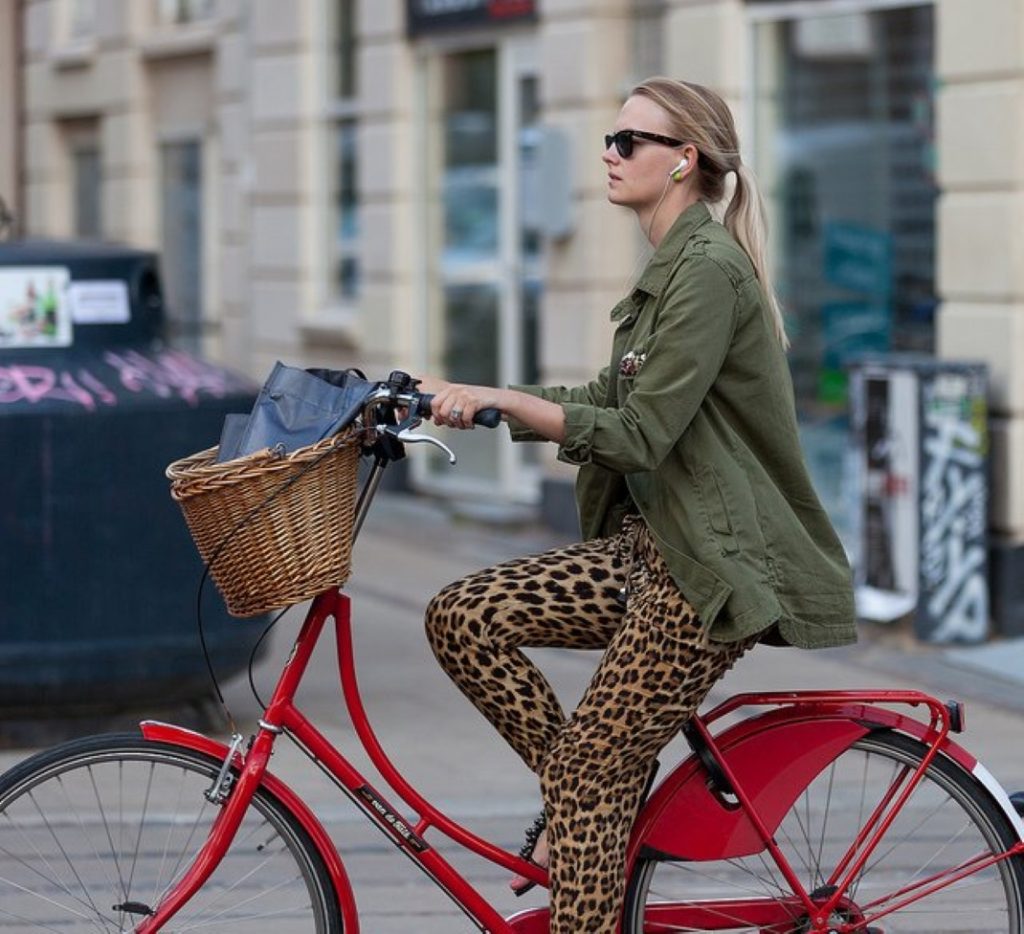
Bicycle BoomThe fact is that we’re at the height of a ‘bicycle wave’, a new era that views bicycles as a respectable everyday mode of transportation that is inspiring thousands of people to change their lifestyle. This may sound like ‘old news’, but not that long ago we still lived in a reality wherein ‘bicycle culture’ was nothing more than a toy for children and adolescents, or an exclusive sport that was ‘out of sight, out of mind’ and affected a very small population, and primarily belonged to the world of ‘cult’ and pastime. Today bicycles are a fashionable trend that appeals to a wider population and substantially influences power relations between urban modes of transportation in cities worldwide. This spectacular phenomenon has already been dubbed ‘The Bicycle Boom’ around the world. In Hebrew, and perhaps this is no coincidence, a name has not yet been found for it. Like our own little metropolis, Tel Aviv, there are many cities around the world where urban bicycle culture is not as developed as it might be.
Bicycle CultureIt’s not only about infrastructure. In the past decade extensive efforts have been made in the West to create a new bicycle culture by also raising awareness to using bicycles as an urban mode of transportation, and in some cities the change is already underway. Sounds simple, right? There are many advantages for the urban cyclist and for the city that encourages cycling. For users, bicycles are a healthy, low-maintenance mode of transportation that enables them to quickly and easily get from A to B. The authorities have just as much to gain. Beyond the desired branding of a ‘Green City’, a city with a developed bicycle culture is a cleaner, healthier, and pleasanter one, with less air pollution, less noise, less traffic congestion, and greater tranquility. However, and despite the obvious interests of all concerned, it seems that a struggle is still being waged to raise awareness and create suitable conditions for the development of an urban bicycle culture.
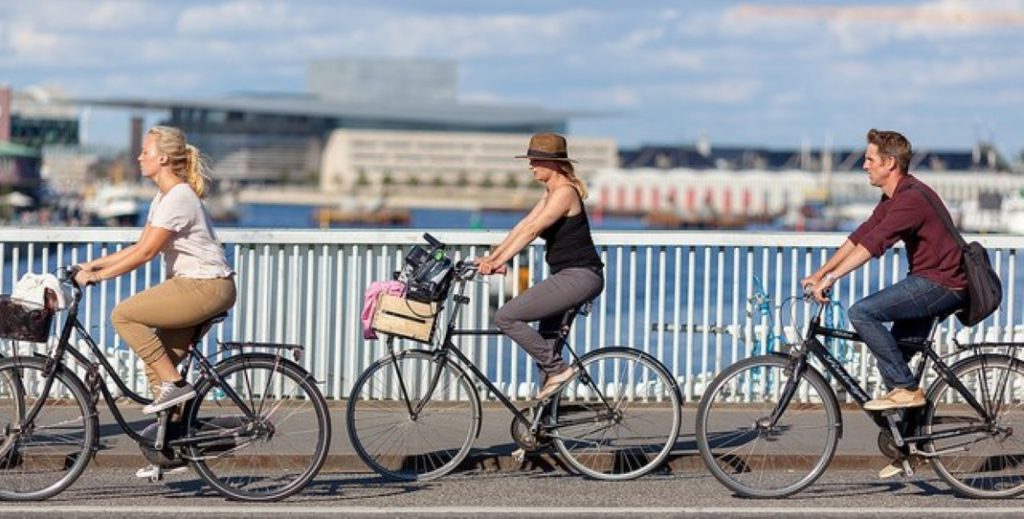
The Photograph that Launched a Million Bicycles It is reasonable to assume that the new dialogue between fashion and bicycles began concurrently in a number of places around the world, but in 2007 Mikael Colville-Andersen created a small blog, and with a single act began what would come to make history. In Israel we have perhaps not heard of him, but around the world he has already become well known. Mikael Colville-Andersen is a filmmaker and photographer by profession. About six years ago, while cycling to his job in Copenhagen, he took a picture of a young woman in a skirt riding a bicycle, and published it on Flickr. Today, this photograph is known as ‘The Photograph that Launched a Million Bicycles’. Colville-Andersen went on to create a blog called ‘Cycle Chic‘ that is entirely devoted to photographs of people, especially women, wearing fashionable clothes and riding bicycles around Copenhagen with grace and chic. The sexy, esthetic, and humanistic photographs captivated thousands of internet surfers all over the world. The blog, which was the first of its kind at the time, attracted considerable attention, and influenced and inspired hundreds of imitations. Over the years, the blog became a catalyst for a new bicycle culture that is only growing and spreading. Its name too, ‘Cycle Chic’, has become a term that has been assimilated into international jargon, and today symbolizes anything and everything associated with style and bicycles. At the time, all Colville-Andersen wanted to do was document and share how the city’s residents ride their bicycles in style and with ease every day of the week. All he actually did was to disperse the fog surrounding bicycles, and show everybody that riding a bicycle can be a daily activity, and that there is no need to change how you dress to do so; on the contrary, the photographs documenting businessmen in suits and women in skirts and heels riding bicycles only made the activity more desirable, and thus it was also branded as such. The new dialogue he created between trend, style, fashion, and bicycles gathered momentum. Today this dialogue is liberating bicycles from the ‘sweaty sport’ stigma that was attached to it for so many years, and attracting many potential cyclists who had shied away from or were ambivalent toward urban cycling to the idea.
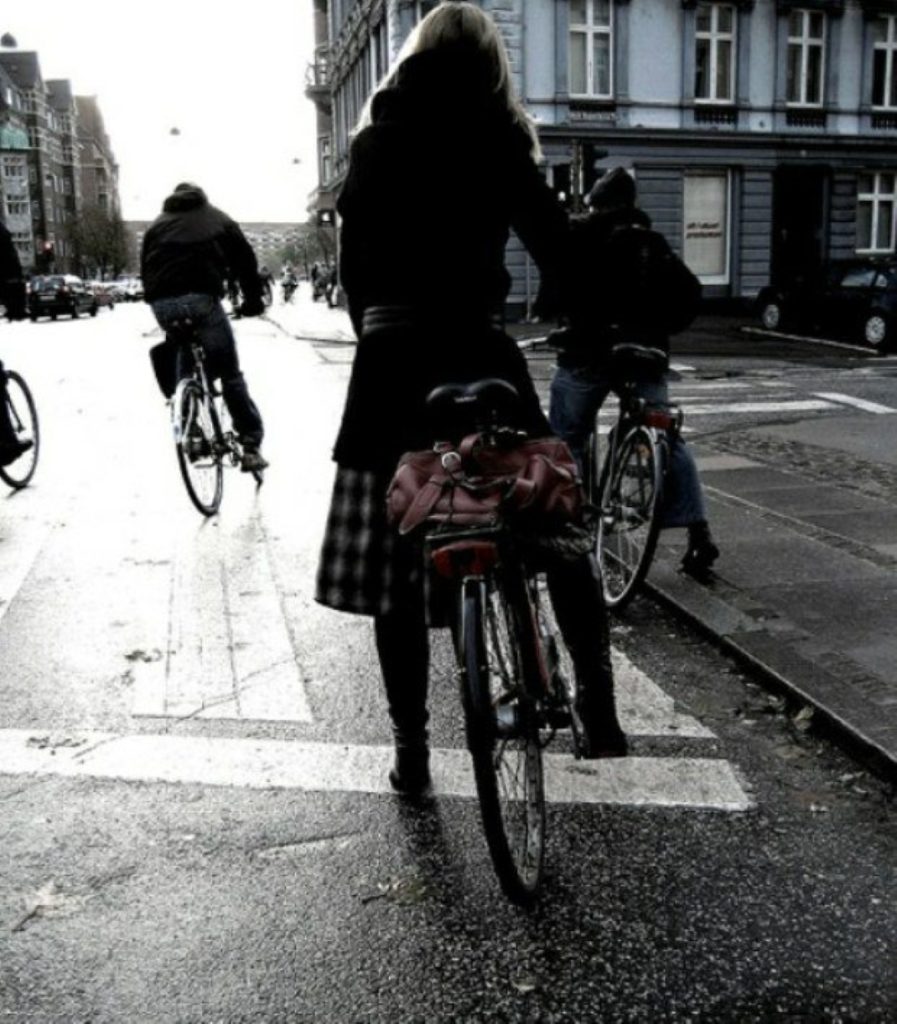
An Interview with Mikael Colville-Andersen, the Pope of Urban CyclingI came across Mikael Colville-Andersen by accident while surfing the web in search of data on the state of Tel Aviv’s bicycle infrastructure compared with the rest of the world. When I entered the word combination ‘bicycle friendly cities’, I discovered the Copenhagenize Design Co. Index that ranks the world’s most bicycle friendly cities. That’s where I also first encountered the name Mikael Colville-Andersen. I couldn’t afford a flight to Copenhagen, so I conducted a long-distance interview with him.
Over the years Colville-Andersen has been accorded numerous titles, from urban mobility expert, award-winning fashion blogger, bicycle anthropologist, bicycle ambassador, to the Pope of Urban Cycling.
I asked him how he describes what he does.”We have an expression in Danish, ‘a beloved child has many names’, or in English, ‘call me what you want, just call me’. I guess it really is hard to define what I do. The truth is that this whole thing is like a snowball, and its just getting bigger. It’s humbling”.

How did it all start? How does a photographer and filmmaker (his official profession) become a mobility expert and promoter of bicycle culture worldwide?”It all began in 2007 when I decided to post photographs I took that dealt with bicycle culture in Copenhagen on one internet website. At first there were series of photographs documenting society in Copenhagen, and at a certain point they began to include images from the everyday life of the capital’s residents, most of whom ride bicycles. Most of the photographs documented fashionable residents on their bicycles, which I started publishing. I started a blog called ‘Cycle Chic’. The feedback I received on the photographs I published was positive, and it was clear that interest was developing around the world in seeing how bicycles are an integral part of everyday life in the Danish capital. What happened after the blog went live surprised everyone. At the time there wasn’t a single website that engaged in the content I posted, that spoke about girls on bikes, or the combination of style and fashion with ordinary, humble bicycles. When I started the blog and called it ‘Cycle Chic’, I in effect created a term describing the art of cycling in fashionable, everyday clothes, and from there things gathered momentum. The first photograph I published is now called ‘The Photograph that Launched a Million Bicycles’. The blog created a global movement, a new fashion trend, and the imminent return of bicycles as a mode of transportation in the urban space. As its popularity grew, it attracted readers who are interested in fashion as well as in bicycles and bicycle culture. As its popularity grew, bloggers appeared all over the world with whom I connected, and thus a wider global network was created that brings different angles and views to the blog”.
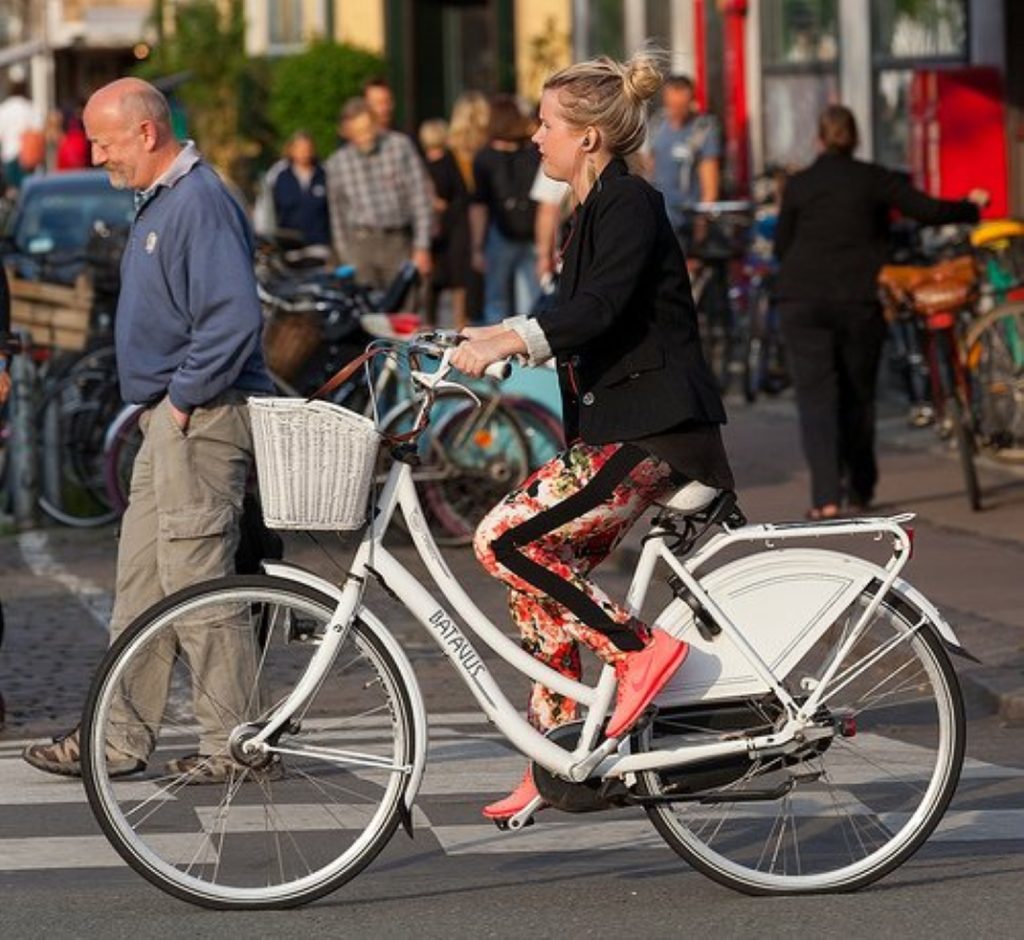
The corresponding blogs worldwide with which Mikael connected can be seen via his blog, ‘Cycle Chic’. They even bear his logo and are an integral part of his website. Besides these blogs, there are more than a hundred ‘imitations’ on the web, and I can only assume that they do not operate under his supervision. I wondered what he as a creator thought about this phenomenon.
Do you believe that as a movement Cycle Chic already has a life of its own and views the ‘imitations’ as something positive that helps to promote it? Or is this a case of copyright infringement?Mikael was quick to correct me, informing me that the numbers I have are out of date.
“There are probably two hundred imitations. Many of them are no longer active, but quite a few still are. Most of them ask for permission, and thanks to them we created the Cycle Chic Republic, which is a group of energetic and passionate bloggers from all over the world. The group is a kind of ‘super league’, and anyone else who wants to join has to aim high. We have no intention of policing other blogs, but the system we’ve created helps to promote a certain outlook, so we’ll remove imitations that use the name ‘Cycle Chic’ but don’t stand by our philosophy”.
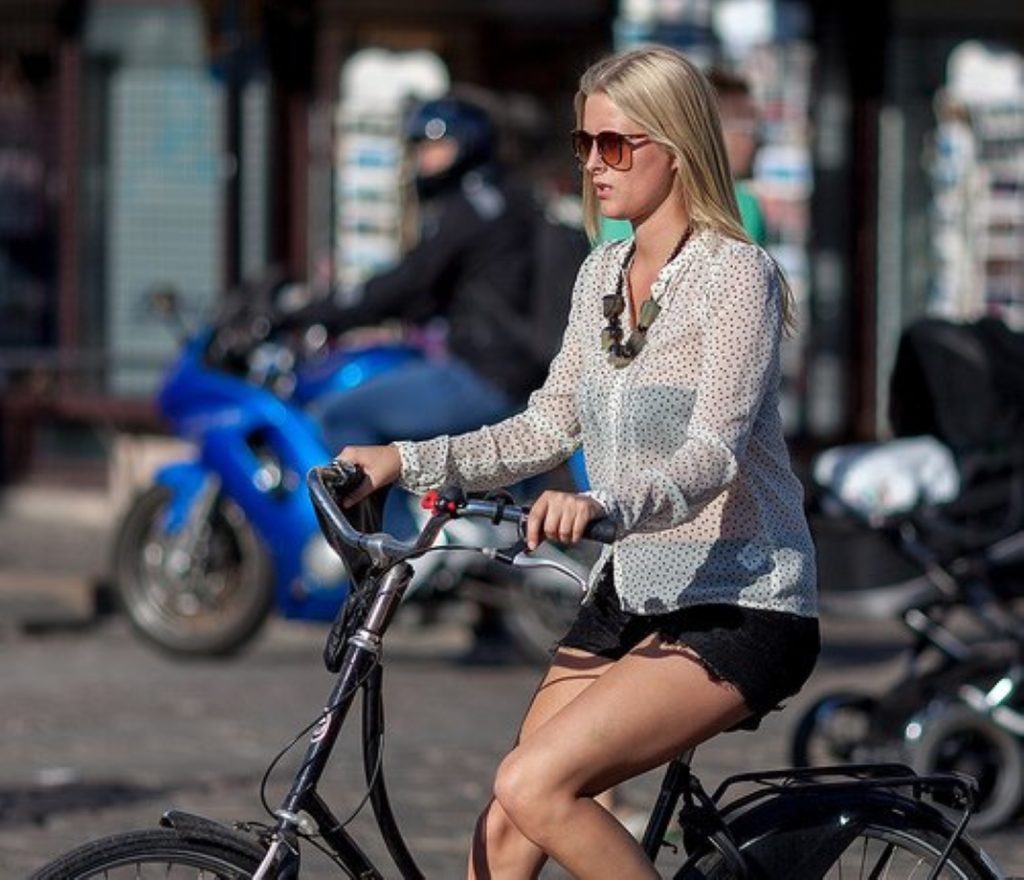
Two hundred bloggers around the globe have decided to adopt the concept. We’re talking about enormous influence. I asked Mikael whether he knew at the time that he was creating something this big, and what in his view are the reasons for his success.”It all happened quite by chance, but fortunately I identified in time why so many people were so enthusiastic over the photographs in the Cycle Chic blog. In the past, bicycles were a regular form of mobility in cities all over the world, but for a few generations now bicycles have been shunted to the sidelines as a result of urban planning that primarily focuses on cars. People have forgotten the image that was so common in the past, of residents riding bikes as a mode of transportation wearing their regular clothes, because in recent generations bicycles have been perceived as a sport, and their dialogue has been mainly with pastimes and hobbies, and nothing more. The ‘bicycle gene’ is apparently still imprinted in people from the past, and the images I published stimulated it. I saw its value, and continued publishing more and more photographs. People drew inspiration from the blog, which in turn inspired me to continue. The success of Cycle Chic led to Copenhagenize.com, and consequently I maintain two parallel blogs. One examines ways to ‘copenhagenize’ a city, and the other shows what we’ll get if it happens”.
Nothing stops us cycling in Copenhagen. Grit Tind on Vimeo
Mikael also referred me to a post on his blog where he thanks all his supporters, and publishes some of the testimonial emails he has received, attesting to the influence his blog has on his readers all over the world.
It seems that his blog, Cycle Chic, has started a new kind of dialogue between fashion, style, and bicycles. True, today it already feels natural. Bicycles feature in fashion advertisements and are even sold in fashion stores bearing the label’s logo, there are innumerable fashionable bicycle accessories, and paparazzi photographs document celebrities riding them. To all intents and purposes, bicycles today are a trend, and as opposed to the prevailing perception in recent decades, nonchalantly riding a bicycle around the city has become ‘cool’. It seems that the dialogue between fashion and bicycles has considerable influence on the renewed awareness of their everyday use.
Does the new and desirable image of bicycles also owe a debt of gratitude to fashion companies and the media, which while they exploit bicycles for profit, also give them a respectable platform, and contribute to their promotion? I asked Mikael his opinion.”People already tried to exploit the bicycle trend in the previous century, and what we’re seeing today is the same. The market is full of all kinds of ‘cycling clothes’. It’s a consumer-based economy, so it is what it is, but our goal is to make people understand that they don’t need silly Levi’s jeans specially designed for urban cycling, when any pair of trousers will do the job. In Copenhagen no one uses special equipment or wears special clothes for cycling. We dress for cycling the same as we would for walking or taking the bus – as usual. The fashion industry jumped on the bandwagon of the Cycle Chic trend from the start, and it has undoubtedly helped to leverage it. ‘Mainstream’ fashion labels began using bicycles in their advertisements. I think that’s a good thing. The more publicity bicycles get everywhere, the closer it brings us to achieving our goal – turning urban cycling into a normal, everyday activity, and thus reestablishing it in the urban landscape. We have to ensure bicycles remain contemporary and fresh in public consciousness, and to do so we use ‘mainstream’ marketing techniques. It seems we’re succeeding, which is good. Riding a bike has become normal again, and bicycles have become a symbol of what we’d like our cities to look like”.
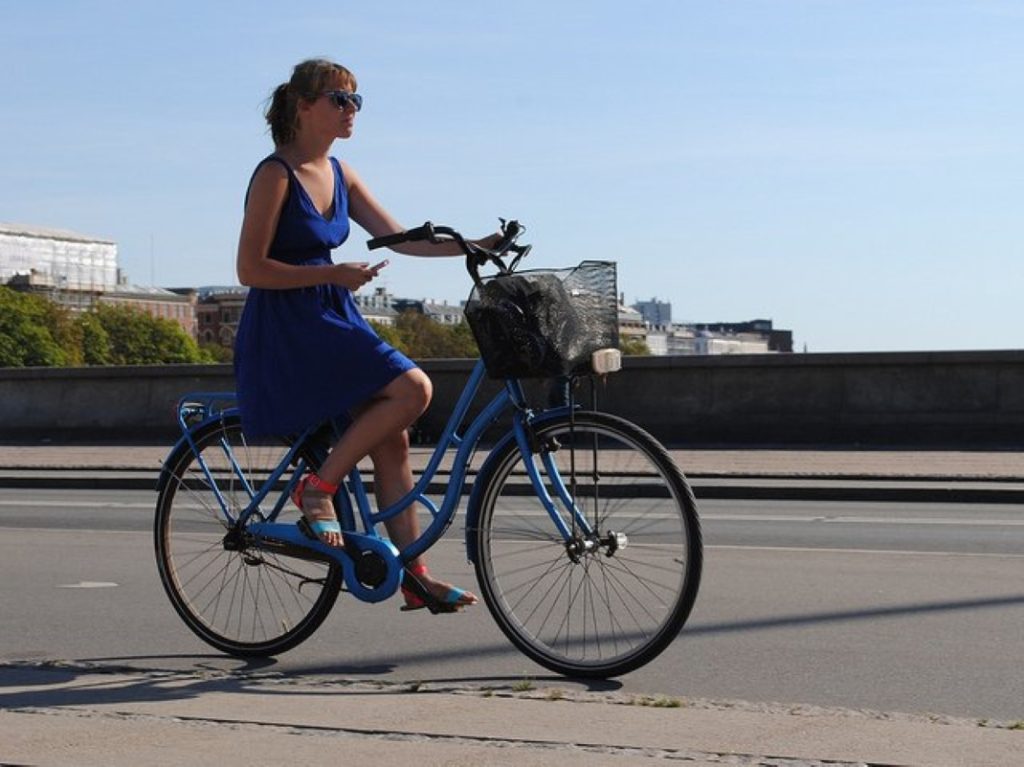
Mikael is ambivalent about using the bicycle trend in industry and in general. An excellent post he wrote about the success of Cycle Chic as a blog, a term, a movement, and a trend, describes the good and bad news attending this success. Although the dialogue he triggered between bicycles, fashion, and style led to the fashion industry exploiting the power of the contemporary trend, it also yielded a considerable number of collaborations with fashion labels and events that gained its support. He produced an advertisement combining fashion and bicycles with fashion label Muuse, a Danish fashion house that markets clothes designed by young local designers, and took part in fashion shows and events all over the world. I wanted to hear about his experience, and about his motivation for giving his support.
Copenhagenize Design is the company Mikael founded following the success of his blog. The company advises cities and organizations around the world, and specializes in planning urban cycling infrastructures, and promoting bicycle culture through design. The company views bicycles as an effective tool in the urban toolbox for building vibrant environmentally-friendly and resident-friendly cities in the twenty-first century. Under Mikael’s leadership, the company currently comprises a team of six young professionals, and interns from around the world. On their website, the homepage states:
“We approach every job from the human perspective – using design, anthropology, sociology, and common sense as our points of departure”.
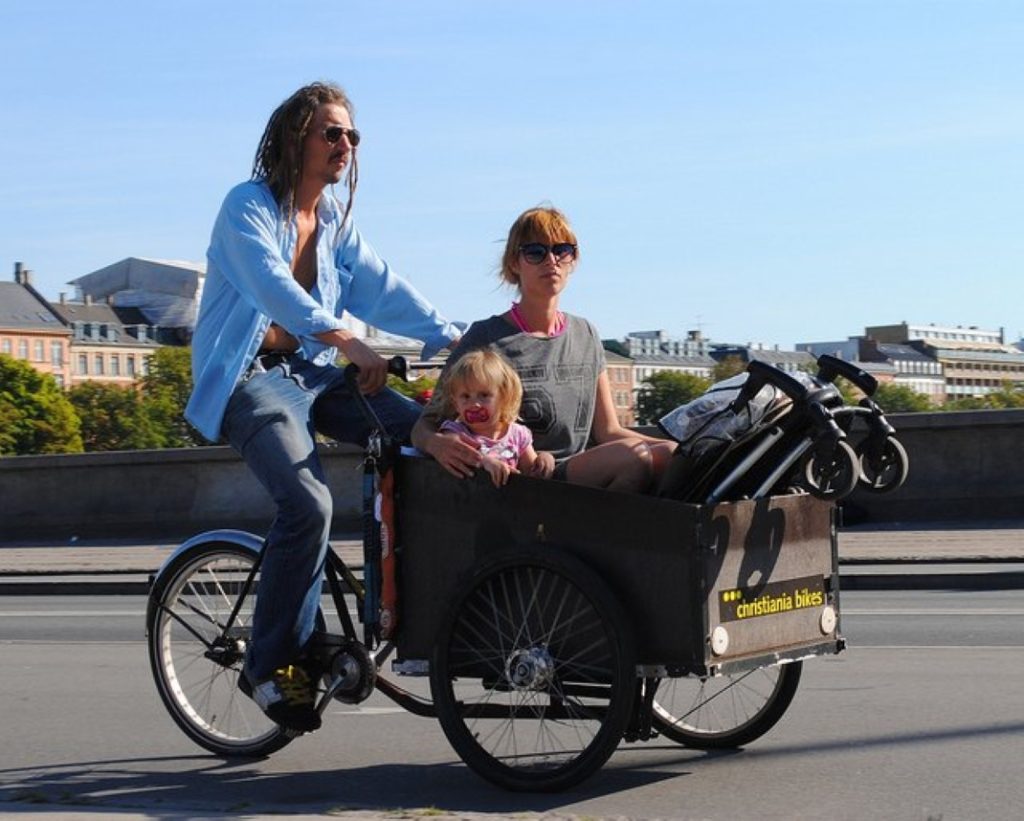
Sounds wonderful and convincing, but how do you do it? I asked Mikael. What are these design and anthropology tools they use, and what distinguishes them from the tools used by city engineers today?”First of all, we appeal to the 99 percent, the ordinary residents, in our design, in our marketing, in everything. We don’t care about the spandex-clad ‘hot cyclists’ on their carbon fiber bicycles. We’re interested in bicycle transportation and urban bicycle culture, not in cyclists who dash at high speed on a 100 kilometer track in some race. We understand the effect a developed bicycle culture, like we have in Copenhagen, has on the urban landscape, and we want to see it happening all over the world. A sociological and anthropological viewpoint is both key to understanding human behavior, and a tool by means of which certain behaviors can be changed or effectively learned from. It seems that all the ‘hot cyclists’ want is to recruit members to the subculture that’s been created. What we want is to return bicycles to general society, where they can serve us and our cities as they did in the past”.
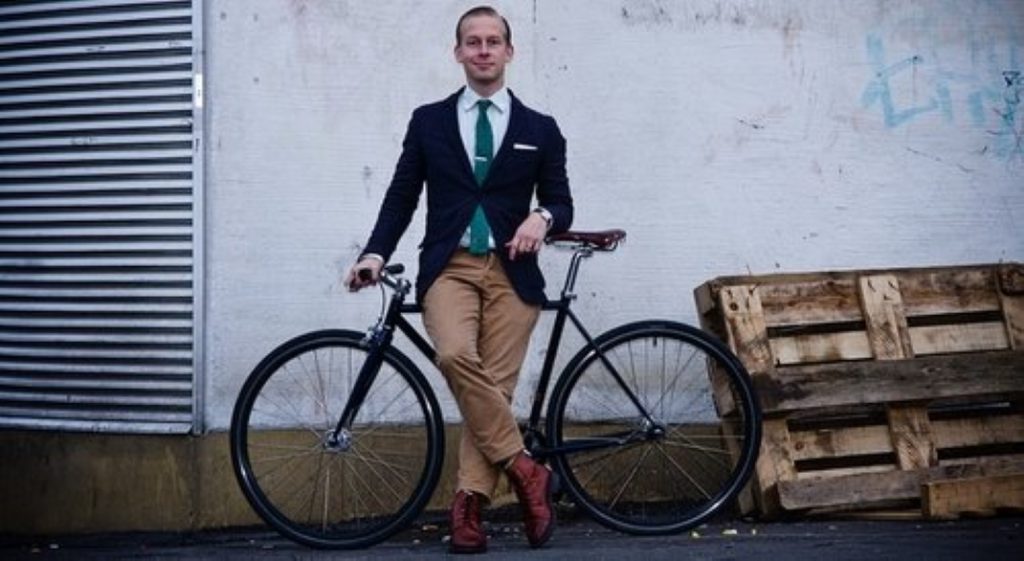
And what about our metropolis? Tel Aviv is a young, vibrant city abounding with style. Although certain efforts are being made, I believe its residents (including me) long for a meaningful development in urban cycling culture and infrastructure.
I asked Mikael if he believes that real change can come from people and their perceptions, and not only from the authorities, and I hoped to get a few tips that would help us to bring about change. Mikael brought me down to earth.”In the end it’s all a matter of infrastructures. The city has to develop itself, to be modern, and to incorporate protected bicycle lanes into its main thoroughfares. That’s what cities around the world are doing now. Cities in the Copenhagenize Index 2013 in which no bicycles remained five years ago, are rebuilding their bicycle culture, and showing the way to success. They are developing bike sharing systems, infrastructures, and even acting to reduce the speed limit on city streets. Cities such as Bordeaux, Paris, Budapest, Dublin, Nantes, Seville, and Barcelona are proving that it’s possible to bring about significant change and to ‘copenhagenize’ any city within a very short time. Tel Aviv needs traffic and transportation planners and engineers who are working in the present century, not stuck in outdated planning methods wherein motorized vehicles are ‘kings’, and politicians with a vision for the future who are not living in the past. It was great to see that Israel has partially repealed the law concerning cyclists wearing helmets, and I took part in it personally. This kind of move encourages people to consider using bicycles as an everyday mode of transportation, it sheds positive light, and helps to promote the idea, and that’s a positive step in the modern direction”.
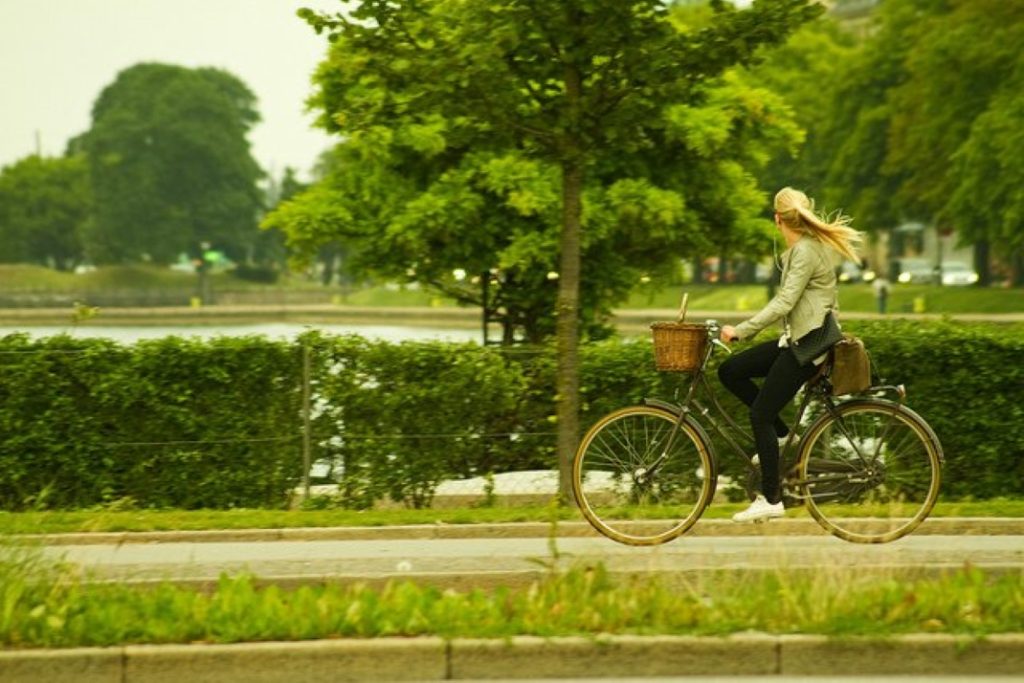
Mikael referred me to the Index through which I came to know him. As I have already said, Tel Aviv wasn’t on it. I asked him if our metropolis had ever come up in their lists. He told me that Tel Aviv had been ranked in their Index in 2011 and 2013, and although it did not make it onto the list of the world’s twenty most bicycle-friendly cities, it had scored fairly high on the global list.
To conclude the interview, I felt compelled to ask what kind of bicycle the man who changed worldwide bicycle culture rides, and in case you’ve also been wondering, he has more than one. “I’ve got a Swedish bicycle dating back to 1955 that serves me for everyday use. Great design, and it’s wonderfully constructed and balanced. I’ve got a cargo bike to transport the children and groceries. And apart from them, I also have a few bikes that I keep for guests”.
* This article was written as part of the MA Curating Program at Bezalel Academy of Arts and Design in collaboration with Design Museum Holon
